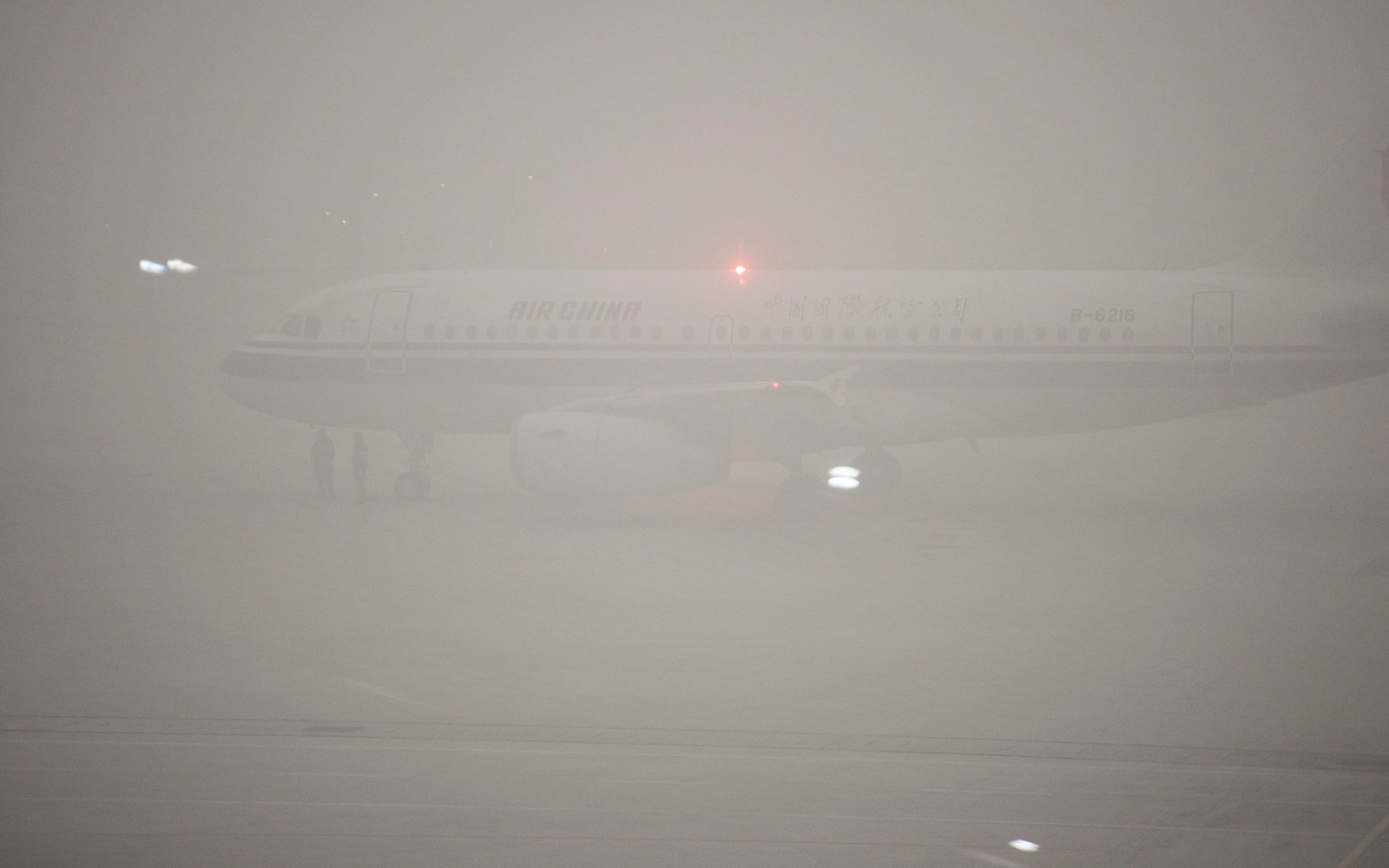
Heed the warning from one who just found out the hard way.
This story originally appeared on Fortune.
Yes, serious smog shuts down schools in Beijing, restricts half the cars from the roads, and halts construction. But think about the toll on travelers. It could affect your next once-a-quarter visit!
I got a dose of the smog's costs Tuesday night. My Hangzhou to Beijing flight left on time, around 10:30 p.m., but it was clear something was amiss when we circled around Beijing's airport for 25 minutes.
"Due to bad weather at the Beijing airport, we will be landing in Taiyuan," the flight attendants announced to 130 passengers. "We apologize for the inconvenience."
I stopped an energetic young flight attendant. "So the smog is serious?"
"Right!" he said.
Beijing's airport handled 22 million passengers in the latest annual ranking, second only to Atlanta as the world's busiest airport. If the heavily trafficked Hangzhou to Beijing route that connects two business hubs like New York and Chicago was diverted, so were a lot more.
We were now headed to Taiyuan, 520 kilometers away. We would maybe head back to Beijing if things improved that night.
I was trying to follow along with three women berating the male attendant, but the only part I understood: if the air didn't improve, there was "no solution."
It didn't.
The air quality index in Beijing hovered near 350 that night, or "severely polluted." The World Health Organization says 20 is healthy. It was the fourth of eventually five days since Saturday of heavy smog in Beijing.
Around 2:30 a.m. we landed in Taiyuan, the 3.5-million person manufacturing capital of Shanxi province. The air quality index there was 347, also "severely polluted."
Related: China's Embarrassing Toxic Smog Cloud
Why Taiyuan was a better option than Beijing wasn't important; I just wanted sleep.
"Ladies and gentlemen, we regret to inform you because of poor weather your flight has been cancelled."
Officially no going back to Beijing.
Then another wait.
"Ladies and gentlemen, we regret to inform you ground staff is unavailable right now."
We landed in Taiyuan to the surprise of everyone—including Taiyuan's ground people.
After an hour of waiting, when tempers started to flare, at 3:30 a.m. we deplaned and took a bus to the Taiyuan Railroad Mansion hotel for a quick night's sleep before a promised 12 p.m. flight Wednesday into Beijing.
Related: Beijing Prepares for Another Red Alert Over Smog
On Wednesday morning, I asked a friend who is a pilot at one of China's fast growing small private airlines what was the latest news.
He was stuck in Urumqi, the capital of far-off Xinjiang province, waiting for a clearing of his own smog cloud. Urumqi's AQI hit 400 on Wednesday.
He said the standard visibility for landing in China has to be 550 meters, so our flight was rerouted to Taiyuan. Pilots can employ special maneuvers to cut down the needed visibility at four Chinese airports, Beijing included. But a few dozen incoming flights can't all do the same maneuver.
Smog "is a big problem in the winter months in pretty much all northern China," he texted. "Crazy really. "
So there were cancellations coming into Beijing Tuesday night and early Wednesday morning.
Related: Beijing Goes All Out to Fight Latest Smog Spell
The economic costs of smog are an informed guess at best. The Chinese government said directs costs amounted to $200 billion a year in 2010. But if people are stuck in Taiyuan consistently for a day at a time, how close does the government estimate the cost?
The promised 12 o'clock flight back to Beijing Wednesday morning turned out to be 2 p.m.
Chinese flight regulations require the flight attendants to take 10 hours break between work days, according to my pilot friend. So our 2 a.m. landing meant we were always destined for a 2 p.m. takeoff.
On the plane is the same energetic attendant. He looked rested.
There's a young guy with a stylish pompadour hair-cut sitting in front of me.
"I'm just so tired," he says.